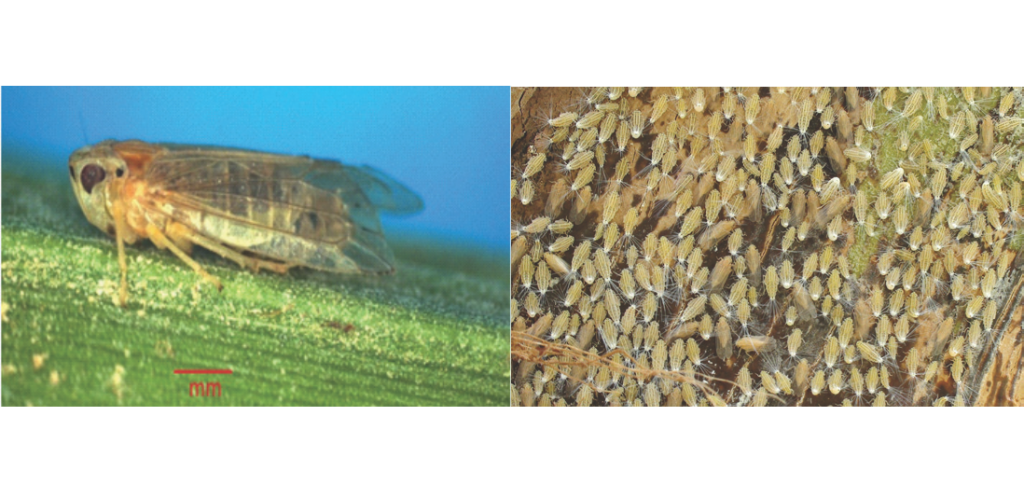Assessing the Optimum Droplet Size for Controlling Dubas Bug on Date Palm in the Sultanate of Oman When Applying an Insecticide Spray from an Aircraft
Dubas bug is considered to be the key pest for Date Palm in Oman, based on the total area infested, severity of the infestation and economic damage caused during the last four decades. Dubas bug adults and nymphs suck plant sap and coat leaf surfaces with honeydew leading to sooty mould development, both of which reduce yield and quality of dates. It has two generations each year, an Autumn generation where the area infested is relatively limited and a Spring generation when it is more extensively dispersed over 12,500 hectare in various province/regions in Oman.

Dubas bug female adult (leaf); and nymphs and adults gathering in the bases of Date Palm leaves (right).
Aircraft were first used to apply insecticides for control of the Dubas bug (Ommatissus lybicus) in Iraq in 1964 on about 10 million Palm trees, while the first use of an ultra-low volume (ULV) spray from the air was in 1965. In Oman, aircraft were first used to control Dubas bug on Date Palm in September 1976, when an infested area of nearly 12,500 ha was treated using two fixed-wing aircraft in oases and villages where plantations were in open country.
ULV spraying was adopted as it had economic benefits and was operationally more efficient, with rotary atomization to produce droplets that are relatively uniform in size, in contrast with conventional spray nozzles, which produce droplets that vary widely from small droplets that may drift or evaporate before reaching the target to large droplets that provide poor coverage of foliage. To assess whether droplet size affected mortality of Dubas bug, a trial was conducted on the Spring generation in 2010 in selected infested areas in four locations in Oman. Each location was divided into five plots, each of which was in a village in the same valley, covering about 10 ha. There was a buffer zone of between 800 metres and 1 km separating the villages.
This is an abstract of the full article published in: Outlooks on Pest Management – June 2016 issue.
The full text of this article is available to subscribers of Outlooks on Pest Management.
Non-subcribers may buy & download full text article.
Authors: AlSaraiAlalawi Mamoon1, Denis J Wright2 and Hans Dobson3.
1Plant Protection Department, Ministry of Agriculture, Muscat, Sultanate of Oman,
2Department of life Sciences, Imperial College london, london UK,
3Natural Resources Institute, University of greenwich, Chatham Maritime, Kent UK
Category: Agriculture










